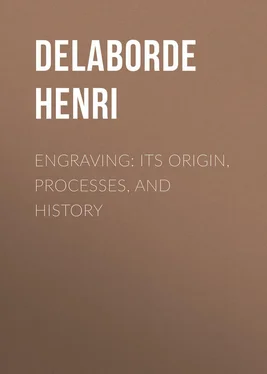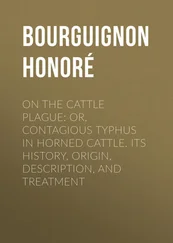Henri Delaborde - Engraving - Its Origin, Processes, and History
Здесь есть возможность читать онлайн «Henri Delaborde - Engraving - Its Origin, Processes, and History» — ознакомительный отрывок электронной книги совершенно бесплатно, а после прочтения отрывка купить полную версию. В некоторых случаях можно слушать аудио, скачать через торрент в формате fb2 и присутствует краткое содержание. Жанр: foreign_antique, foreign_prose, на английском языке. Описание произведения, (предисловие) а так же отзывы посетителей доступны на портале библиотеки ЛибКат.
- Название:Engraving: Its Origin, Processes, and History
- Автор:
- Жанр:
- Год:неизвестен
- ISBN:нет данных
- Рейтинг книги:5 / 5. Голосов: 1
-
Избранное:Добавить в избранное
- Отзывы:
-
Ваша оценка:
- 100
- 1
- 2
- 3
- 4
- 5
Engraving: Its Origin, Processes, and History: краткое содержание, описание и аннотация
Предлагаем к чтению аннотацию, описание, краткое содержание или предисловие (зависит от того, что написал сам автор книги «Engraving: Its Origin, Processes, and History»). Если вы не нашли необходимую информацию о книге — напишите в комментариях, мы постараемся отыскать её.
Engraving: Its Origin, Processes, and History — читать онлайн ознакомительный отрывок
Ниже представлен текст книги, разбитый по страницам. Система сохранения места последней прочитанной страницы, позволяет с удобством читать онлайн бесплатно книгу «Engraving: Its Origin, Processes, and History», без необходимости каждый раз заново искать на чём Вы остановились. Поставьте закладку, и сможете в любой момент перейти на страницу, на которой закончили чтение.
Интервал:
Закладка:
In this struggle of rival national claims the schools of the Low Countries are entitled to their share of glory. It is quite possible that their claims, so generally ignored towards the end of the last century, should in the present day be accounted the most valid of all; and that, in this obscure question of priority, the presumption may be in favour of the country which supplied an art closely connected with engraving with its first elements and its first examples. It would be unbecoming in every way to pretend to enter here on a detailed history of the origin of printing. The number of exhaustive works on the subject, the explanations of M. Léon de Laborde, M. Auguste Bernard, and more recently of M. Paeile, would render it a mere lesson in repetition or a too easy parade of borrowed learning. Anyhow, the discovery of printing with type is so intimately connected with the printing of engravings, and the practical methods in both are so much alike, that it is necessary to mention a few facts, and to compare a few dates. We shall therefore, under correction, reduce to the limits of a sketch the complete picture drawn by other hands.
If printing be strictly understood to mean typography, or the art of transferring written matter to paper by means of movable and raised metal types, there can be no doubt that its discovery must date from the day on which there was invented at Mayence the process of casting characters in a mould previously stamped in the bottom by a steel die bearing the type to be reproduced.
Gutenberg, with whom the idea of this decisive improvement originated, is in this sense the earliest printer. His "Letters of Indulgence" of 1454 and his "Bible" are the oldest examples of the art with which he is for ever associated. In a general sense, however, and in a wider meaning of the word, it may be said that printing was known before Gutenberg's time, or at least before he published his typographical masterpieces. People previously knew both how to print broadsides from characters cut on a single block, and how to vary the arrangement of the text by using, in place of an immovable row of letters, characters existing as separate types, and capable of various combinations. On this point we must trust to the testimony of one of Gutenberg's workmen, Ulrich Zell, the first printer established in Cologne. Far from attributing to his master the absolute invention of movable type, he merely contrasts with the process known and practised in the Low Countries before the second half of the fifteenth century "the far more delicate process" of cast type "that was discovered later." And Ulrich Zell adds, "the first step towards this invention was taken in 1440 in the printing of the copies of Donatus 5 5 That is the "Treatises on Latin Syntax" by Ælius Donatus, a grammarian of the fourth century. In the Middle Ages these treatises were much used in schools.
which were printed before this time in Holland ( ab illis atque ex illis )."
Now if these copies of Donatus were not printed by means of movable type, why should they be mentioned rather than the many other works equally fitted to give a hint to Gutenberg? Why, in going back to the origin of the discovery, should his pupil say nothing of those illustrated legends which were xylographically cut and sold in all the Rhenish towns, and which the future inventor of printing must have seen hundreds of times? For the attention of Gutenberg to have been thus concentrated on a single object, there must have been some peculiar merit and some stamp of real progress in the mode of execution to distinguish the copies of Donatus printed at Haarlem from other contemporary work. Laurence Coster – the name attributed to the inventor of the process which Gutenberg improved – must have already made use of a method more closely allied than any other to the improvements about to follow, and destined to put a term to mere experiments.
To suppose the contrary is to misunderstand the words of Ulrich Zell and the influence which he attributes to the Dutch edition of Donatus, from which Gutenberg derived "the first idea of his invention." It is still more difficult to understand how, if the Donatuses are block-printed, reversed letters are sometimes found in the fragmentary specimens which survive. There is nothing the least extraordinary in such a mistake when it can be explained by the carelessness of a compositor of movable type, but such a mistake would really be incredible on the part of a xylographic workman. What possible caprice could have tempted him to engrave occasional letters upside down? One could only suppose he erred, not from inadvertence, but with voluntary infidelity and in calculated defiance of common sense.
The discovery which has immortalised the name of Gutenberg should be recognised and admired as the conclusion and crown of a series of earlier attempts in printed type. Taking into account the inadequacy of the movable type, whether of wood or of any other substance, first employed by the Dutch, and the perfection of the earliest specimens of German printing, it can and should be admitted that, before the publication of the "Letters of Indulgence," the "Bible," and other productions from the workshop of Gutenberg and his fellow-labourers attempts at genuine typography had been already pursued, and to a certain extent rewarded with success.
From the very confession of Ulrich Zell, a confession repeated by the anonymous author of the "Chronicle of Cologne" printed in 1499 6 6 Published by John Koelhoff under the name of "Cronica van der hilliger Stat van Coellen," p. 31 and after.
the first rude essay in the art ( prefiguratio ) was seen in the town of Haarlem. We may, in short, conclude that the idea of combining designs cut on wood with a separate letterpress in movable types, belongs in all probability to Holland.
One of the oldest collections of engravings with subject matter printed by this process is the "Speculum Humanæ Salvationis," mentioned by Adrian Junius in his "Batavia" – written, it would seem, between the years 1560 and 1570, but not published till 1588, many years after his death. Therein it is expressly stated that the "Speculum" was printed before 1442 by Lourens Janszoon Coster. It is true that Junius is speaking of events which occurred more than a century before the time to which he ascribes them: "on the testimony," as he says, "of very aged men, who had received this tradition, as a burning torch passed from hand to hand." And this belated narrative has appeared, and may still appear, somewhat doubtful. We ourselves consider the doubt to be exaggerated, but we shall not insist on that. The specimens survive which gave rise to such legends and commentaries; and it is fitting they should be questioned.
Four editions of the "Speculum" are known, two in Dutch and two in Latin. It must be understood that we only speak of the editions which have no publishers' names, no dates, nor any sign of the place where they were published: the "Speculum," a sort of Christian handbook, much used in the Low Countries, having been frequently reprinted, with due indication of names and places, during and after the last twenty years of the fifteenth century. The oldest Dutch edition that is dated, the one of 1483, printed by John Veldenaer, reproduces certain engravings which had already embellished the four anonymous editions, with the difference that the plates have been sawn in two to suit the dimensions of a smaller volume. Hence, whatever conjectures may exist as to the date of the first publication, we have, at least, a positive fact: as the original plates only appear in a mutilated state in the copies printed in 1483, it is evident that the four editions where they appear entire are of earlier date. These questions remain: – first, whether they are earlier, too, than the second half of the fifteenth century – earlier, that is, than the time when Gutenberg gave to the world the results of his labour? and second, whether they originated, like the edition of Donatus, in a Dutch workshop?
Читать дальшеИнтервал:
Закладка:
Похожие книги на «Engraving: Its Origin, Processes, and History»
Представляем Вашему вниманию похожие книги на «Engraving: Its Origin, Processes, and History» списком для выбора. Мы отобрали схожую по названию и смыслу литературу в надежде предоставить читателям больше вариантов отыскать новые, интересные, ещё непрочитанные произведения.
Обсуждение, отзывы о книге «Engraving: Its Origin, Processes, and History» и просто собственные мнения читателей. Оставьте ваши комментарии, напишите, что Вы думаете о произведении, его смысле или главных героях. Укажите что конкретно понравилось, а что нет, и почему Вы так считаете.












